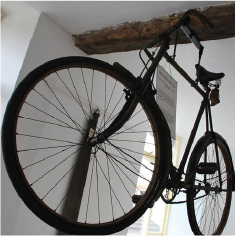CALL: 01993 775 915
ENQUIRE HERE

The Witney Bicycle
‘The Witney Bicycle’. Extracts from The Motor Cycle and Cycle Trader May 26, 1939.’
In January 1897, Mr Warner started up for himself. He built his own machines and claims the honour of having fitted the first free wheel in Witney. “I rode it myself” he chuckled “and nearly fell off.”
“Yes, I could build cycles,” said Mr. Warner. “There’s one running about Witney now that I built in 1900 from BSA fittings. It has given no trouble and still has the same bottom bracket.”